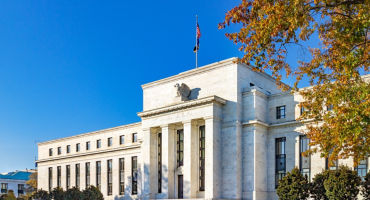Fixed income investors just experienced a “once-in-a-career” market correction: a 10% decline in the Bloomberg Barclays US Aggregate Bond Index (the “Agg”) through the first four months of 2022. For most allocators, this sharp downturn came in tandem with a painful equity market sell-off that has produced a -15% return for the S&P 500 Index year-to-date. It’s been rough sledding for traditional assets so far this year.
The forces behind the fixed income correction are by now familiar to market participants: rising interest rates, triggered largely by higher and stickier inflation than expected, and a scramble by the US Federal Reserve (Fed) to play “catch up” — in other words, to rein in inflation before a vicious cycle of surging wages and even higher prices takes hold. What now? I’m still hesitant to call a “top” for how high 10-year US rates might climb (beyond 3%) because the trajectory of future inflation remains highly uncertain, but I see tentative signs that we may be nearing a plateau. Below are four considerations that have me leaning that way.
1. How much monetary policy tightening is already priced in? A lot. As Figure 1 illustrates, according to the Fed Funds futures market, many investors now anticipate that the Fed Funds rate will reach 3.2% by the end of 2023, some 200 basis points (bps) higher than its current level of 75-100 bps. Fed Chair Powell was not particularly dogmatic when asked recently to identify a “neutral” Fed Funds rate, but he cited a range of 2.0%-3.0%. So, at 3.2%, the market apparently believes the Fed needs to pursue more restrictive monetary policy in order to “break inflation’s back.”
2. Is the economy responding to higher interest rates? The economy and markets seem to be reacting more to prospective Fed tightening than to actual tightening. Typically, the real economy responds to higher rates with a lag time of 6-12 months. However, as Figure 1 shows, a bellwether index of financial conditions (including mortgage rates, asset prices, credit spreads, and money supply) has already drifted lower in response to this year’s “rate shock” (i.e., a 150-bp spike in the 10-year Treasury yield). US manufacturing, home sales, and export data have also dropped lately, albeit from strong levels.
3. What will it take for the Fed to step back from tightening? Lower inflation and weaker demand. Last week, Chair Powell said it would likely take several months of lower core inflation for the Fed to retreat from its planned 50-bp rate hikes. Powell also mentioned “financial conditions” as something the Federal Open Market Committee (FOMC) will be watching closely, along with the labor market. Rising unemployment or any hints of growth dipping below trend might cause the Fed to pause on rate hikes.
There could also be a path forward where the market more or less “does the Fed’s work for it.” Indeed, it already has to some extent: Without having even tightened policy much (yet), the Fed’s more hawkish rhetoric has itself helped the fixed income market adapt to the reality of higher bond yields. Plus, a strong US dollar is also disinflationary. To preserve credibility, the Fed may need to meet the market’s already priced-in rate-hike expectations, but tougher financial conditions or falling inflation might give the Fed leeway to pull back from tightening.
4. What could go wrong from here? The Fed is in uncharted territory with regard to monetary tightening given: 1) the gap between current inflation and the Fed’s target; and 2) the use of tightening to pare back the Fed’s balance sheet, simultaneous with outright rate hikes. The Fed’s estimate that its balance sheet “run-off” is equivalent to only 25 bps of tightening seems quite low. Moreover, the Fed’s mistaken assumption last year that inflation would prove transitory delayed the beginning of its rate hikes. As a result of the Fed being “late to the game,” US monetary policy remains accommodative, with real (inflation-adjusted) 10-year interest rates still negative as of this writing.
Inflation is the wildcard: The Fed continues to believe higher commodity prices and supply-chain disruptions from the Russia/Ukraine war and China’s COVID lockdowns will ease. If they don’t, the Fed may decide to tighten policy more aggressively than the market currently expects. Under that scenario, Fed “overtightening” could tip the US economy toward recession, especially if paired with economic and market volatility from ongoing geopolitical turmoil or other sources. On the other hand, if the Fed pulls back and the market doesn’t believe inflation is under control, the Fed’s credibility is at risk.





























Monthly Market Review — October 2025
Continue readingBy